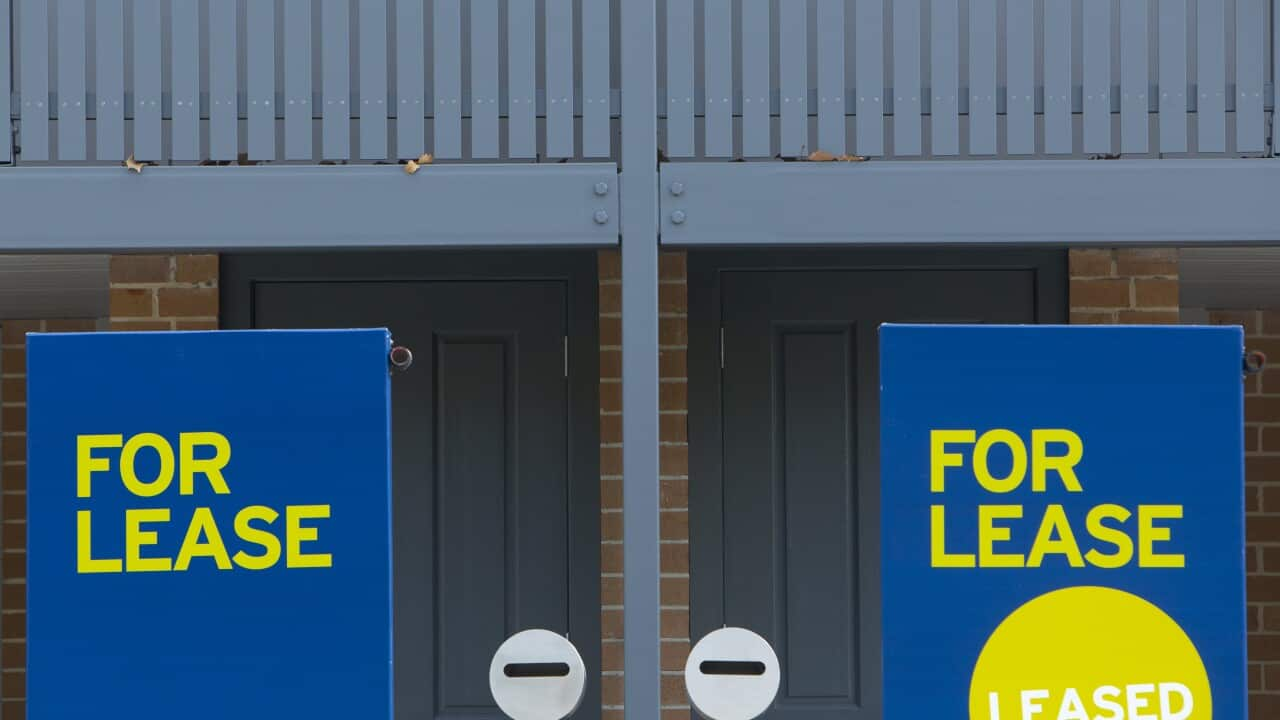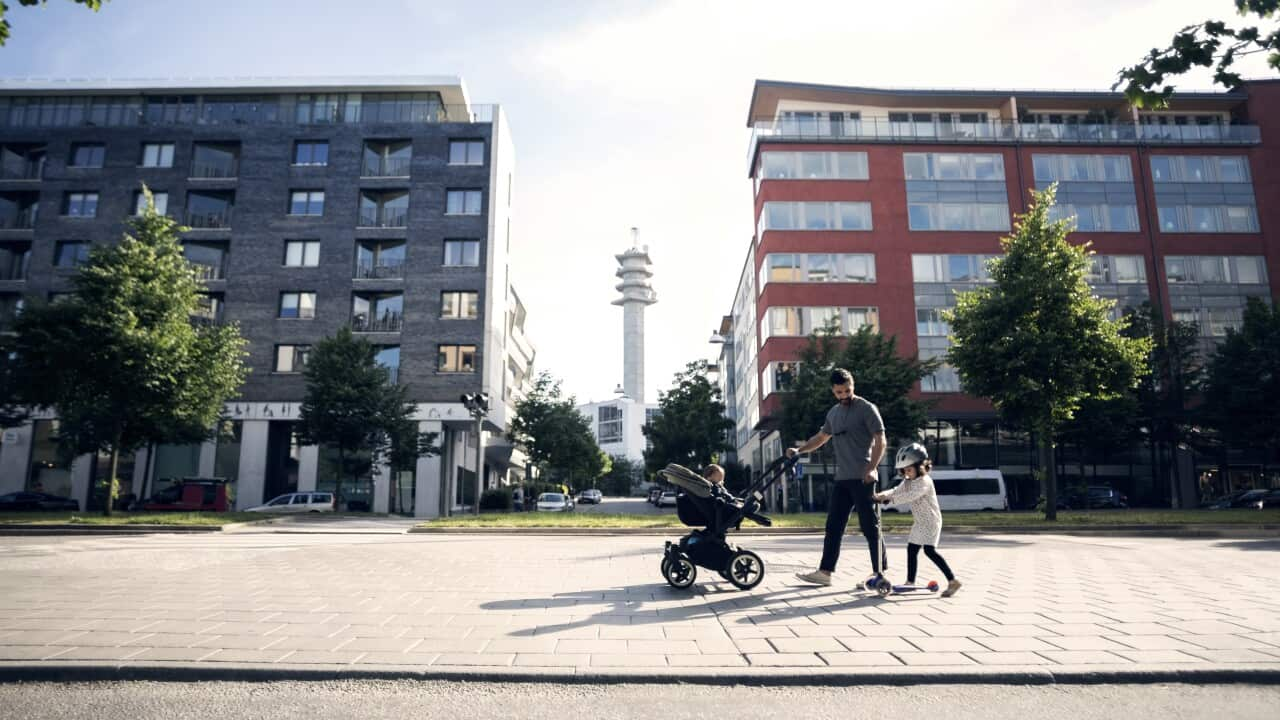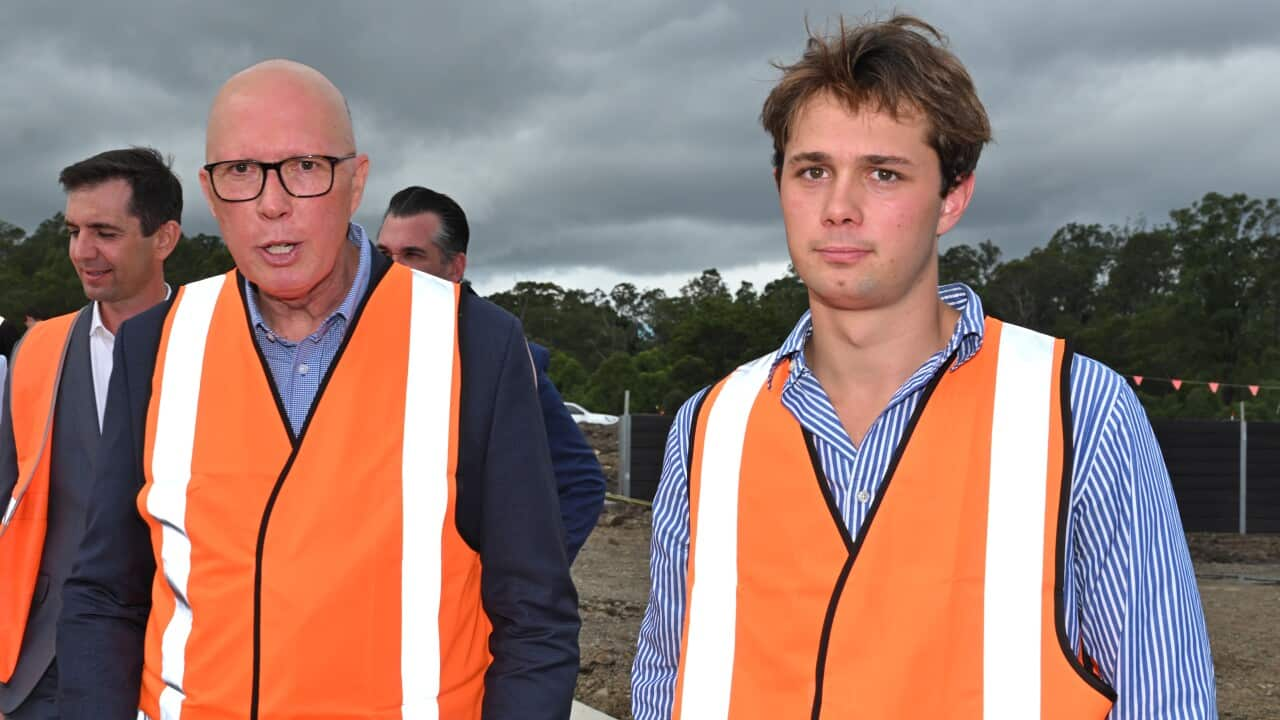Sam (not his real name) worries about putting his life savings into an off-the-plan new home, fearing the risks involved.
It's taken the 30-year-old at least two years of intentional saving to grow his deposit to around $30,000.
The Canberra resident doesn't want to take any unnecessary risks when deciding on a property.
"I know a few people have done it, but I feel like it's assuming a lot of risk in something that's already a big leap," he told SBS News of buying a new build.
He said new policies released by the major parties for first home buyers "hold some weight" as he considers his vote ahead of the upcoming election, because it will directly influence the purchase of his first home.
Over the weekend, the Coalition unveiled its plan to allow first-home buyers access to tax-deductible interest payments on their first home — if they buy a newly built property.
Labor also announced a plan in partnership with the states and territories aimed at getting people into newly built properties, saying it will spend $10 billion over eight years to build 100,000 new homes, exclusively for first-home buyers.
Housing Minister Clare O'Neil told the ABC Insiders program that prices for the homes would be negotiated state by state, but the aim is to create affordable housing for low and middle-income earners.
"In the South Australian example, we're building homes at that affordable entry level of the market, somewhere between $500 and $600,000," O'Neil said on Sunday morning.

Housing Minister Clare O’Neil said the commonwealth will expedite the build of new homes and address the underlying supply issue. Source: AAP / Mick Tsikas
But he is still worried about the risks involved with buying off-the-plan.
He said another problem is that new freestanding houses are often built on the outskirts of major cities where land is cheaper.
These are far from workplaces and other opportunities.
"Or you take a gamble on a new build apartment, which might get you closer to the CBD but [it's] still outrageously priced for a shoebox," he said.
"Plus it feels irresponsible to go that way with one’s life savings [considering] the current trend in new build standards — look at the incident in Mascot a few years ago with that whole apartment block," he said about the Mascot Towers complex in Sydney that is now uninhabitable due to serious cracks that appeared in 2019.
Sam said he may also have to wait longer to move into a new build depending on how long it takes to construct, and faces the risk of paying rent at the same time as he's making repayments on a mortgage.
It raises the question, will the housing proposals appeal to the entry-level buyers it's targeting?
Are we building the right homes?
Dr Liam Davies, a lecturer in Urban Planning and Sustainability at RMIT University, said the greatest challenge with Labor's policy is the lack of detail about what will be built and where.
"Building more suburban housing in the urban fringes isn't overly helpful, that market is very well established," he told SBS News.
He said developers were also not delivering new homes that were suitable for families, including three or four-bedroom apartments.
"The moment those households want to look at having children, they also have to look at moving," he said.
"And you can't sell a flat in the inner city or middle suburbs and buy a townhouse or three-bedroom on a comparable income. You have to be moving further out."
However, Matthew Bowes from the Grattan Institute cautioned against this rhetoric, stating that a developer's business model relies on building homes that people are guaranteed to buy.
"Our family sizes are decreasing, and people want to economise on housing costs as house prices have risen, so it’s not surprising to me that a lot of our newer housing stock has fewer bedrooms," he said.
He suggested the best way to address housing choice is for state governments to unlock the planning laws that restrict building medium-density housing in these areas.
As the government focuses on ramping up new construction, it appears buyer sentiments towards new builds are changing too.
One in three residential homes bought in 2023 were newly constructed, according to Australian Bureau of Statistics (ABS) building activity data analysed by PropTrack.
Proptrack said several factors contributed to the trend, including the more affordable price of new builds, lower initial maintenance costs, the ability to tailor the home to buyers' specific needs, access to the latest technology and energy efficiency.
Quality homes can restore consumer confidence
Major defects in new builds including Sydney's Mascot Towers and in which residents were evacuated and faced expensive bills, have raised concerns in recent years.
Consumer confidence in off-the-plan builds, particularly apartments, has also been rocked by media reports of gas explosions, water leaks, flammable cladding and fire safety issues.
A NSW strata survey in 2023 found 53 per cent of buildings had serious defects in common property, but it found faults in newer buildings were on a downward trend.
Some home buyers have faced lengthy disputes and high-strata fees as they work with developers to correct the issues.
Davies acknowledged the hesitation this has created in the new-build market.

Defects in apartment buildings across the country have contributed to a crisis in confidence among first-home buyers. Source: Getty / Andrew Merry
"And I think that any policy that a state government would be looking to introduce to become a producer of housing does need to provide confidence to those purchases."
Davies said the way to restore first-home buyer confidence was through quality builds.
"The government producing quality dwellings that people want to buy and want to live in — that is what will start to drive confidence in these types of schemes," he said.
Bowes added that both the NSW and Victorian governments had taken "really positive" steps to improve building regulations and ensure quality builds.
In March, the Victorian government introduced legislation to create a new building and plumbing watchdog to oversee aspects including regulation, insurance and dispute resolution.
The new regulator will have the power to stop the completion of off-the-plan sales for apartment buildings if serious defects aren't rectified.
The bill, which is yet to pass the upper house, includes a developer bond scheme. It will require builders to put aside a bond — 2 per cent of the cost of construction — which can later be released to cover repairs.
While the government aims to protect consumers and restore confidence, the Property Council of Australia has said the significant reforms have been rushed through and need adequate industry consultation.
The Victorian changes mirror those made in NSW in 2023, to give inspectors the ability to stop construction while defects are investigated; a similar security scheme to use as insurance in case of building issues; and powers to immediately suspend building certifiers and practitioners.
Can Australia build enough homes?
In August 2023, National Cabinet agreed on a "new, well-located homes" across the country by 2029.
The Albanese government has faced scrutiny over whether this is possible, as it would require the industry to build around 240,000 homes a year.
Hal Pawson is a professor of Housing Research and Policy at the UNSW City Futures Research Centre.
He says history shows the industry is capable of "significant scale", pointing to the booms of government-led construction after World War Two.
"They were building homes for sale at cost price, and that was one of the key reasons why we saw a very rapid increase in the home ownership rate in Australia … in the 50s and 60s in particular," Pawson said.

Source: SBS News
O'Neil is confident Labor's target can be met and cheaper homes built, especially with Commonwealth assistance helping buyers to gain access to land and shorten timelines.
"One of [the levers] is that we've got access to land that's available from state, local and federal government," she said.
"We can also ask the states to do things like significantly truncate the timelines."
— With additional reporting by Rania Yallop






